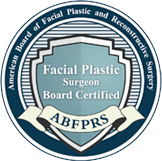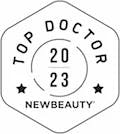I had the pleasure of being asked back to lecture at the California Society of Facial Plastic Surgery (CSFPS) Meeting in Lake Tahoe this year.
My topic this year was “How to Achieve Long Lasting Results in Facelift Surgery.” It was an honor to be asked back the second year in a row to speak to such a talented group of doctors. Present in the audience were some of the most famous facial plastic surgeons, plastic surgeons, oculoplastic surgeons, and dermatologists from Beverly Hills, Los Angeles, and San Francisco. The talk generated a lot of discussion among these top doctors, and I wanted to share it with my readers!
#1 Aging is Not Skin Deep
I first began my lecture with a discussion about how our face ages. If you’ve been following our blog, you will appreciate the series of posts we’ve dedicated to addressing this topic. I feel that it is extremely important to understand that facial aging occurs not only in the skin, but rather on multiple layers – even down to the bone structure! Over time, our facial skeleton actually remodels. This loss of support causes the soft-tissue canvas of the face (the SMAS) to sag. This sagging soft tissue is what causes droopy cheeks, jowling, and our neck to look older. The fat pads in our face – the good fat that gives us a youthful, vibrant appearance – can sometimes also lose volume or actually shift and droop downward. Last, and certainly not least, the layer that we’re most familiar with is the skin. Sun exposure, environmental factors, and even our emotional health can take a toll on the skin and cause photodamage (brown and red spots), fine lines, and wrinkles.
#2 We Now Have Many Non-invasive Treatment Options
The next portion of my talk got the greatest amount of feedback from the audience. I revisited a well-known aging classification system that was published in the 1990s by one of the most famous surgeons in New York City. The classification system described the severity of aging from a score of 1 to 4, and helped surgeons select the patients who would get the best results from a facelift surgery.
It was extremely interesting to revisit this classification system, because the patients we originally thought were the best candidates for a facelift (types 1 and 2), today would likely be recommended a noninvasive solution (Ultherapy®, KYBELLA®, BOTOX® Cosmetic, and dermal fillers). Compared to 30 years ago, the options for treating facial aging have changed dramatically.
#3 This is Not Your Mother’s Facelift
Today we are seeing patients for a facelift consultation, who are much further along on the aging process (type 3 or 4), and most likely have already had some type of cosmetic treatment. As a result, facelift surgery becomes much more challenging than it was 30 years ago. The key is to recognize that the face ages in four dimensions, and my foundational approach to facelift surgery addresses each and every layer. The patient is able to maintain their natural features and in no way does the face look over-pulled or done.










